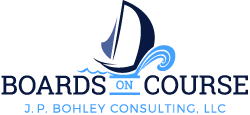Tip #74 How to Use Board Committees Productively
The following principles of the Policy Governance® model can provide insights relevant to a board’s use of committees. I believe boards not currently practicing the Policy Governance model may find them relevant as well.
- "Board Holism: The authority of the board is held and used as a body. The board speaks with one voice in that instructions are expressed by the board as a whole. Individual board members have no authority to instruct staff."
- "Clarity and Coherence of Delegation: The identification of any delegatee must be unambiguous as to authority and responsibility. No subparts of the board, such as committees or officers, can be given jobs that interfere with, duplicate, or obscure the job given to the CEO.”
- "Board Means Policies: The board defines in writing the job results, practices, delegation style, and discipline that make up its own job…. “
(In addition to the basic Policy Governance principles, the job of the board in this model can be described as follows: While a board can reserve additional responsibilities to itself, its core job responsibilities include the following three elements: maintaining an ongoing conversation with key stakeholders (called “owners” by the model), defining the board’s expectations of management and of itself, and ensuring that organizational performance complies with the board’s expectations.)
(The three principles presented above are found in the “Policy Governance® Source Document” produced by Govern for Impact in consultation with John Carver and Miriam Carver, Feb. 2021 revision. For this document, click https://www.BoardsOnCourse.com/policy-governance, then click on The Principles of Policy Governance.)
Corollaries of these three principles provide the following specific guidance:
1. Boards should clearly differentiate between the job of the board and the job of the CEO. Be clear about what responsibilities are being delegated to the CEO and what responsibilities are reserved to the board.
2. Board committees are committees authorized by the board and accountable to the board. Staff committees are committees authorized by the CEO or staff and accountable to the authorizing person.
3. Board committees should focus only on board work and not staff work. They should not be aligned with operational functions that have been delegated to the CEO such as committees focused on program development or program oversight, marketing, personnel (other than focusing on personnel issues related to the CEO), etc. Hence committees should not be allowed to micromanage operational issues delegated to the CEO.
4. Board committees should respect the “wholeness” of the board. For matters deserving of board attention, all board members should become sufficiently educated so that they can make informed decisions about such matters. Committees should not be expected to decide matters for the board. Committees can play a key role in exploring and studying policy options and educating board members about these so that all board members can engage in informed decision making. An executive committee that makes major decisions on behalf of the board is not supporting the wholeness of the board.
5. Board committees should respect the authority the board has granted to the CEO and not undermine this authority through advising or directing staff. A finance committee that supervises and directs a chief financial officer who reports to the CEO is an example of such undermining of the role of the CEO. In addition, no board committee (or single board member) should exercise authority over the CEO since the “boss” of the CEO is the board as a whole.
6. In general, use standing board committees sparingly. When practical, consider use of ad hoc committees. For standing committees and for ad hoc committees clearly define the work products to be produced by the committees. For ad hoc committees establish clear end dates for the committees’ work.
While the above guidelines are drawn from the Policy Governance model, I believe that boards not practicing this model may find these guidelines to be helpful as well.
To learn more about the Policy Governance® model, please click https://www.BoardsOnCourse.com/policy-governance.
